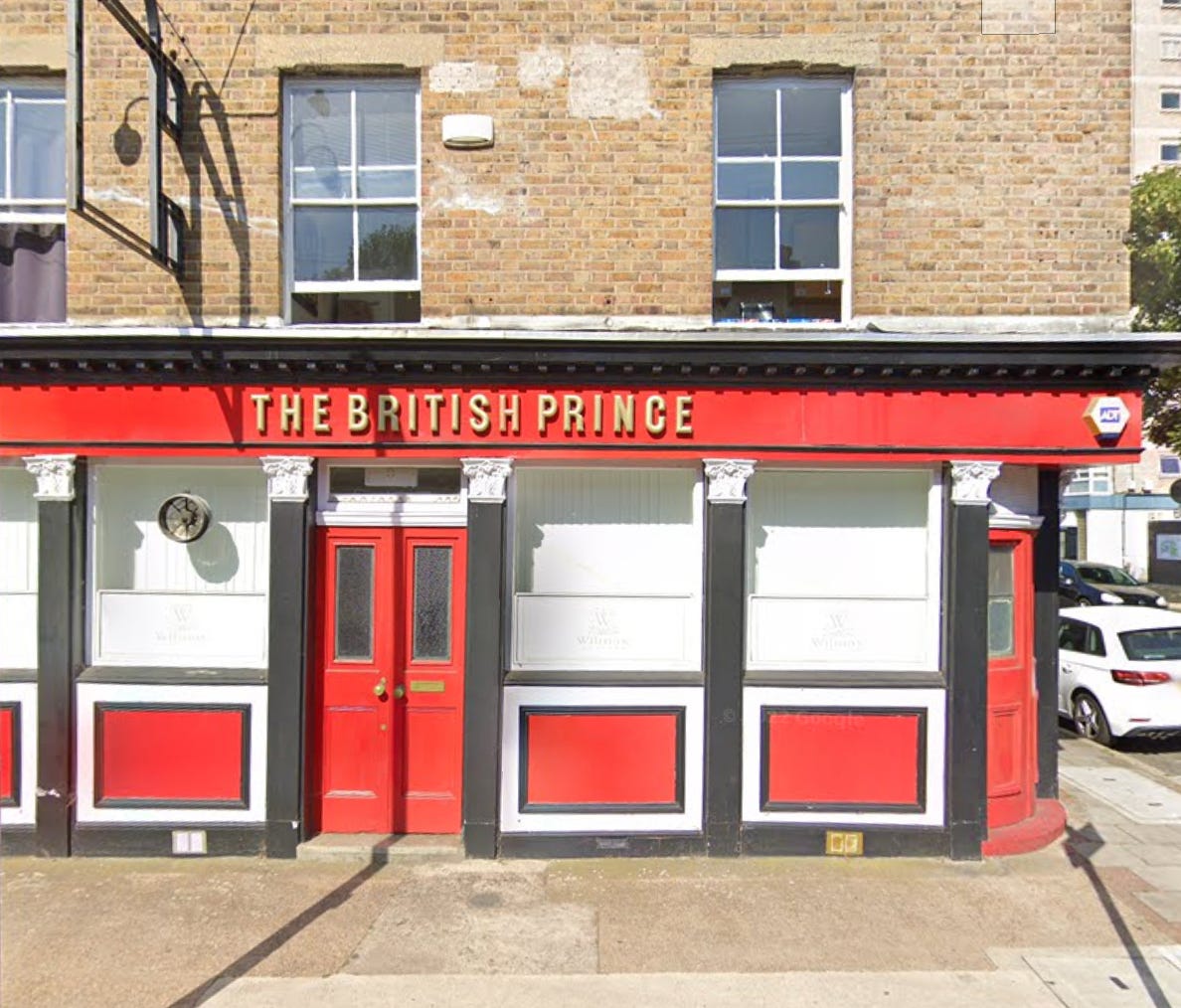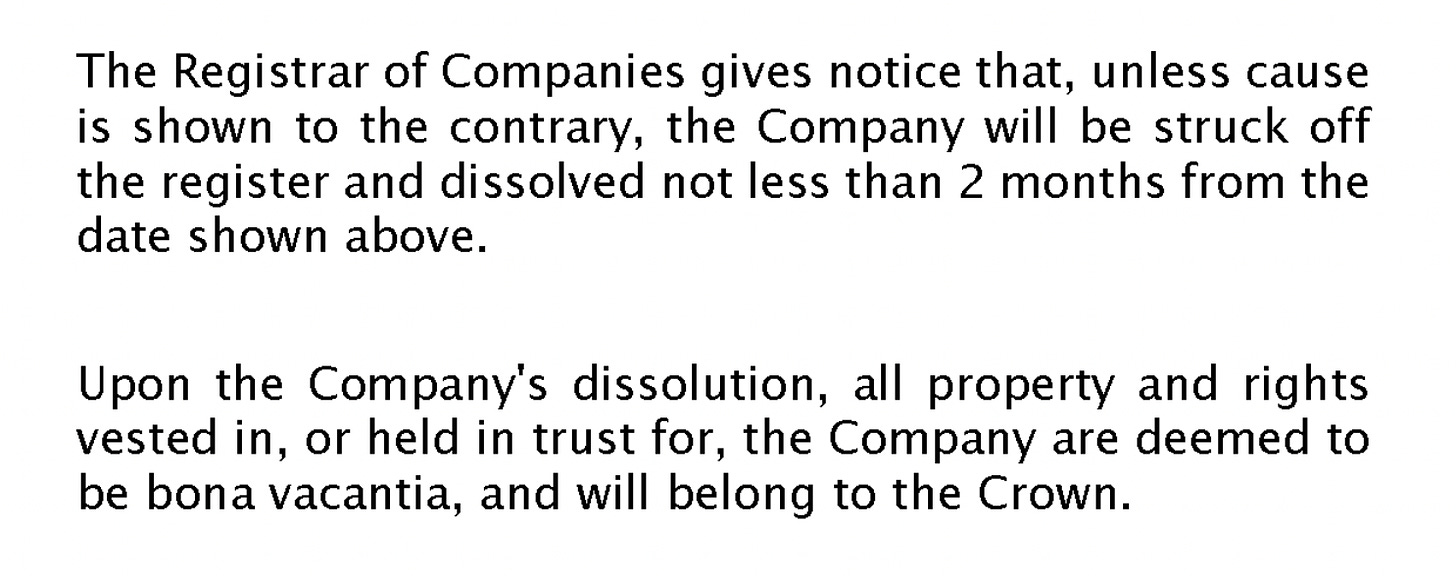Pillar subscribers can listen to this Pillar Post here: The Pillar TL;DR
Happy Friday friends,
Today is the feast of the blesseds Robert Anderton and William Marsden, two English priests of the penal years under the reign of Bloody Queen Bess. And their somewhat truncated ministries are, to my mind, one of the great lessons in the Lord giving you exactly what you ask for.
Anderton was born on the Isle of Wight in or about 1560 and, shortly after leaving Oxford, left England for Europe where he converted to Catholicism. In 1580 he entered the College of Rheims, the seminary for English priests destined to go home and work underground, and was ordained with the Lancastrian Marsden.
The two were sent to England together but on the way were caught in a serious storm. The priests prayed that God would allow them the grace to die on land, rather than be drowned in the sea and the Lord, ever mindful of the prayers of His people, drove their ship ashore on Anderton’s home island of Wight, where they were immediately arrested.
While openly admitting to being Catholic priests, they denied they had broken the law by landing in Elizabeth’s kingdom, since they had been driven ashore by the storm, and had not arrived voluntarily. The law was, to be clear, on their side, but the men also professed the Catholic faith, and owned their mission to serve and save souls in the country, so they were sent to London.
There they were told to take the oath of supremacy, recognizing the queen as sovereign of both Church and state. While gladly owning Elizabeth as their queen in all matters temporal, they refused to grant her spiritual claims and were sent back to the Isle of Wight to be hanged, drawn, and quartered near the site where they landed.
So far as I have been able to tell, they never celebrated the Mass once on English soil, or had the chance to administer any of the sacraments — except perhaps to each other in captivity.
The men of their seminary were all, according to expectation, ordained to die, but few moved so quickly to that end — or so directly following a particular prayer.
May they pray for us.
Here’s the news.
The News
The number of baptisms in South Korea increased by 24% in a year, according to statistics published Wednesday by the Catholic Bishops’ Conference of Korea.
Although annual baptisms in the country remain well below pre-pandemic levels, this still represents a sharp year-on-year rise and something worth celebrating. So what are the numbers? And what are the wider cultural trends fueling the Korean baptismal bounce?
—
Bolivia’s bishops are rallying to support a retired prelate after police raided his residence as part of a money laundering investigation.
The German-born Stetter is, as it happens, the elder brother of Irme Stetter-Karp, the president of the lay Central Committee of German Catholics (ZdK) and co-president of Germany’s controversial “synodal way.”
The raid on Stetter’s home is the latest in a series of law enforcement operations focused on the Church, following the outbreak of an abuse crisis in May 2023.
The initial scandal was sparked by the publication of extracts from the diary of the Spanish Jesuit priest Fr. Alfonso Pedrajas, who died in 2009. The diary indicated that he abused as many as 85 children while serving as a teacher in Bolivia.
Bolivia’s bishops’ conference has previously deplored investigators’ “excesses” after a series of raids on the Jesuit order’s offices in the capital, La Paz, and the investigation is believed to focus on Stetter, Juan Miguel Zarza Álvarez, an attorney of the Diocese of San Ignacio de Velasco, and the diocese itself.
You can read all about it here.
—
The vicar general of Germany’s oldest diocese has defended his decision to disqualify a politician from a parish post because of his membership in the Alternative for Germany (AfD) party.
The move against Schaufert, who represents the AfD in the Saarland state parliament, came less than two months after Germany’s Catholic bishops unanimously approved a statement condemning the party, which is widely described as far-right.
As the tectonic plates of German politics continue to shift, the AfD and the Church’s response to its rise is only going to become more of a story.
—
Sr. Nathalie Becquart, the synodal secretariat’s undersecretary, has raised again the thorny issue of women deacons in an interview with a German Catholic newspaper this week.
Becquart, who has carved out a kind of wandering brief as cheerleader-in-chief for the worldwide synodal process, doubled down on Pope Francis’ repeated statements that priestly ordination is off the table.
But, she suggetsed, if there was sufficient consensus in places, the post-synodal future could include a kind of regional option for deaconesses, along similar lines to how the male permanent diaconate was reinstituted after Vatican Council II.
Pope Francis (and the sacramental teaching of the Church) have repeatedly made it clear that the theology of the sacrament of holy orders and the unity of the three degrees thereof (deacon, priest, bishop) is not up for debate and not open to women.
Whatever deaconesses were in the ancient Church, and whatever they could be in the Church of the future, it has to be something totally other than simply a female analog of the male permanent diaconate. Yet no one seems willing to flesh out what that could or should look like.
So long as people want to continue talking only about the impossible — female sacramental ordination — it seems to me any meaningful progress will be similarly impossible.
You can read the whole thing here.
—
Catholic Answers, a San Diego apologetics non-profit, launched a new AI experiment this week, featuring an avatar-priest, “Fr. Justin,” designed to answer questions about the Catholic faith, using material from the Catholic Answers library.
But the project quickly became controversial.
While some thought the priest avatar was inappropriate, misleading, or just plain creepy, others said the priest simulated virtual sacraments — indeed, “Fr. Justin” gladly heard The Pillar’s, “confession,” before trying to give “absolution.” Still others said the whole project leaned too heavily into unreliable, controversial, and still-confusing technology.
It wasn’t a great debut for “Fr. Justin,” to be sure.
But despite the criticism, Catholic Answers COO Jon Sorensen told The Pillar that he’s not ready to put AI on the shelf. Sorenson said he’ll be working to revise the AI experiment this week — and dropping the priest character altogether — but that he believes AI can have a place in teaching the Catholic faith.
It’s an interesting conversation about the whole project, and Sorensen shows a commendably frank willingness to, as he put it, “take his lumps” for the things that went awry.
Virtual priesthood
I must say, I think everyone at Catholic Answers is taking the AI priest debacle — and it has been a bit of a debacle — in pretty good humor. It takes an admirable dose of humility to admit that you spent several months and thousands of dollars building and testing a thing, only to watch Twitter break it for you in a matter of hours.
By contrast, I think a lot of the critics of the “Fr. Justin” app have become a bit over-invested in the whole thing, demanding that “heads should roll” at Catholic Answers and screaming for public acts of penance from people who were, I think it should be pretty obvious, just trying to do something helpful.
That having been said, I did find the whole AI priest character concept pretty repellent from the start — again, something others have felt as well and which the creators have taken on board — and I have been trying to think through why my reaction to it was visceral.
To be sure, while I remain convinced there’s a good chance the whole AI boom is likely to end somewhere dark and nasty for humanity, I don’t think it is going to be Catholic Answers or anyone else working on similar projects that bring us to our Skynet moment.
And short of that moment coming, I like and can see the use of AI as a kind of “super Google” application for searching and returning answers from the enormous historical trove of the Church’s accumulated teaching and history.
I’d love a fully searchable database of the writings of the Church Fathers, which currently occupy a whole bookcase in my office. And a digitally cataloged and easily retrieved canonical corpus of the fontes of the 1917 Code of Canon Law is the sort of nerdy resource I can only fantasize about.
Where things get a little weird is when we anthropomorphize technology — trying to imbue it with the semblance of character and personality.
I find the whole thing a bit creepy, at its most general level. And I think there’s a real chance its growing ubiquity can do more harm than good.
The increasing atomization of society has been much discussed, as has the growing social dysfunction attendant to the coming of age of a generation used to finding community and companionship through relatively impersonal online discourse. Too many people already seek validation and reassurance of their own humanity, and dignity from a more or less anonymous chorus of Twitter claps and Instagram likes.
Conditioned to all this, I think it’s all too easy for some — perhaps the most socially isolated and vulnerable — to slip into a full-blown reliance on phony discourse with what’s essentially a fake intelligence. I think this is what made the character of “Fr. Justin” repellent to so many people.
On a surface level, dressing the AI in the guise of a priest is an innocent enough intention: Catholics tend to “ask Father” when they have a question about the faith.
But the reality is, the priesthood and priestly ministry isn’t primarily about answering questions — in theory or practice. Priests confect and administer the sacraments, they counsel, they direct, they save souls. No engine of data search and recall can do any of this, but a facsimile of a personality will try anyway, as Catholic Answers saw to their chagrin.
Priests stand in persona Christi, and the ones I know best know that doesn’t impart encyclopedic knowledge of the faith. But it does come with its own charisms and graces. The priesthood is, like the Christian faith itself, an incarnational thing. It needs people, it meets people, it serves people as people.
A priest can’t do priesthood, properly speaking, online. It requires the kind of personal encounter Pope Francis is always banging on about, the kind that leaves shepherds of souls “smelling of the sheep.”
The real problem with “Fr. Justin” wasn’t that the AI tried to forgive sins or that it gave obvious nonsense answers to some fringe questions, it’s that the very premise of it bought into a kind of virtual humanity and virtual society which the Church should be pulling back from as hard as it can.
I’ve every faith in the good intentions of the Catholic Answers people. I’m sure they’ll be tweaking and testing their AI app as hard and as fast as they can.
My advice, for what it’s worth, would be to make it as far from human as they possibly can.
The mystery of the British Prince
While I was in London last week, I took the opportunity to visit some old friends in the East End, which was something of a regular haunt of mine when I was in my teens and early twenties.
The family I was seeing lives, and has lived for decades, on one of those streets of rowhouses which popular culture would have you believe is still the norm in that part of town, even if developers are rapidly turning the place into a kind of gentrified urban-suburb of the nearby financial district at Canary Wharf.
The street remains unchanged since last I was there, years ago. Surprisingly so in the case of the local pub, the British Prince, which closed a few years before I was married.
In its time it was what they call a proper East End boozer: low ceilings, walls stained to the color of used tea bags and sticky with nicotine, a half-sized and much-abused pool table, and regular lock-ins on a Friday and Saturday night. It was glorious.
I was never a regular there, but knowing a few people on the street, I would occasionally wind up at the Prince at the end of an evening which would, at least on my small sampling, always devolve into “carnage.” Though that probably was more a reflection of my social circle, rather than the pub itself.
When the place closed, it was widely accepted the site would be snatched up and flipped into apartments, or maybe a coffee-slash-bicycle-repair shop catering to the outbreak of hipsters then spreading like a rash across the East End from Shoreditch.
But to my surprise, the Prince was still there last Sunday — out of business, but looking for all the world like it was just waiting for opening time.
The old sign, a jug-eared cartoon of the now-King Charles, was missing, but it was otherwise in better shape than the day it shut. From the outside, anyway.

I asked one of the street’s residents, an old friend and a life-long neighbor of the place, what was going on.
“Oh that?” she said. “There’s people in there, upstairs and down, but you never see them coming and going. It’s supposed to be a ‘business’ now, but it’s just a front for the Russian mafia.”
That seemed a stretch to me. But this is the part of London that, in the old days when the docklands had actual docks, was once home to opium dens and gambling hells, so maybe not impossible.
Later that evening, I was with another old friend in another nearby pub and I sense-checked the notion with him. We agreed it seemed far-fetched and did some rudimentary googling.
We discovered that a company is listed as having its headquarters at the old pub, boasting the address as its “international headquarters,” with other offices in… Kazakhstan, Warsaw, and an urban armpit between Philadelphia and Trenton, N.J.
The company website seemed to be selling tableware and furniture of intensely bland aesthetics at what seemed to us like rather high prices. But, at least from our phones, there seemed to be no product reviews, and several attempts to place an order online suggested the online checkout wasn’t actually hooked up to anything — though I was able to get to the payment page when I switched to a desktop later.
When I got home, I dug into the corporate registration and pulled the company filings, because there’s something deeply weird and wrong with me that I can’t control.
I found it had only one registered director and shareholder, a gentleman with a rather Cyrillic-sounding name who listed his address as being in Crimea, which I would note — and I don’t want to stray into sensitive issues of geopolitics here — has been Russian, at least in brute force terms, since before the filing was made.
It seems the business was served with several compulsory strike-off actions last year — basically formal notices that the government deemed it a fake company, and that it would be forcibly dissolved and its assets forfeited to the Crown.
These actions were stayed after a slew of remedial tax filings which, if I am reading them right, basically show the company is operating at a significant six-figure annual loss and seems to pay no wages to its declared annual average of two employees.
As near as I can tell, the place is meant to be selling Chinese tableware as a subsidiary of a Hong Kong-registered company, though how it stays in business I cannot fathom.
To be clear, I am not saying this thing is a front for the Russian mob. In its defense, I did find its brand-name stuff for sale through some Amazon sites, albeit again at high prices compared to other options also made in China. So there must be something to some part of the business.
What I will say is a shuttered two-room East End pub seems an unlikely headquarters for a successful multinational import-export business. And their corporate filings suggest they are struggling to make a go of it.
What’s really going on in the old British Prince is a mystery to me. But having sunk more time than I’m comfortable admitting looking into it, everything I’ve found argues at least as much in favor of the old pub being a poker parlor for a bunch of tattooed vory v zakone as it does for it being a viable business.
That said, my friend back home has since noted to me that those two GRU guys who poisoned the Russian defector with Novichok back in 2018 had stayed at a hotel around the corner.
So, really, with the international network of offices in unlikely locations, obviously unproblematic operating losses, and very low profile, the whole thing could be a KGB safe house and staging post.
That might make more sense. Though if it is, they should really make the thing a little harder for two guys to figure out from their phones while they’re four pints deep in the Half Moon.
Anyway, now I’m curious. Not so curious I’m going to just bowl up to the door and start asking questions, mind you. I mean, I’ve seen the movies.
And anyway, it’s just plain rude to go doorstepping people with a lot of impertinent questions. What if they are KGB hitmen? They’d be horribly embarrassed to have been rumbled by me, I’m sure, and it would just be awkward for everyone.
A better plan is probably to tempt JD to London and send him in. With his manic friendliness and total insensibility to social norms, let alone danger, I’d probably be unable to restrain him.
I could meanwhile retreat with polite reserve to watch from behind the lace curtains in a friendly house over the road.
With JD’s luck, he’ll probably come out of the place with an evening’s winnings from the card game, a nifty tattoo of the Kremlin, and a great story.
That’s how it usually goes with him.
See you next week,
Ed. Condon
Editor
The Pillar






